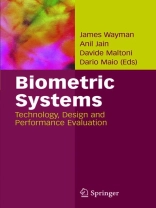The use of computers to recognize humans from physical and behavioral traits dates back to the digital computer evolution of the 1960s. But even after decades of research and hundreds of major deployments, the field of biometrics remains fresh and exciting as new technologies are developed andoldtechnologiesareimprovedandfieldedinnewapplications.Wor- wide over the past few years, there has been a marked increase in both g- ernment and private sector interest in large-scale biometric deployments for accelerating human–machine processes, efficiently delivering human services, fighting identity fraud and even combating terrorism. The p- pose of this book is to explore the current state of the art in biometrics- tems and it is the system aspect that we have wished to emphasize. By their nature, biometric technologies sit at the exact boundary of the human–machineinterface.Butlikealltechnologies, bythemselvestheycan provide no value until deployed in a system with support hardware, n- work connections, computers, policies and procedures, all tuned together to work withpeople to improve some real business process within a social structure.
Cuprins
An Introduction to Biometric Authentication Systems.- Fingerprint Identification Technology.- Iris Recognition.- Face Recognition.- Elements of Speaker Verification.- Technology Evaluation of Fingerprint Verification Algorithms.- Methods for Assessing Progress in Face Recognition.- The NIST speaker recognition evaluation program.- Large-Scale Identification System Design.- Biometric System Integration.- Biometrics and the US Constitution.- Privacy Issues in the Application of Biometrics: a European Perspective.












